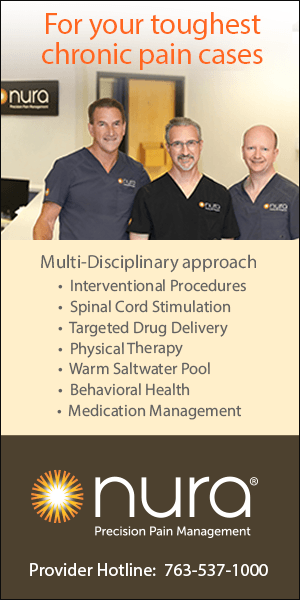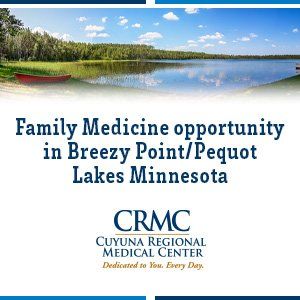ost dermatologists often like to start a conversation by stating one fun fact: the skin is our largest organ. It’s an unbelievably complex one — it is the body’s barrier and first defense to the outside world while maintaining our internal water content. Other functions of our skin barrier, however, are less well known. For example, it’s a primary organ of the immune system and is incredibly immunologically active. It also acts as a sensory organ, protects us from the damaging effects of UV radiation and maintains our temperature. But your skin barrier doesn’t start out with all of these abilities fully intact. Our skin changes over time starting in the newborn period. Newborn skin is 30% thinner than adult skin and also has a higher pH and lower ceramide and natural moisturizing factor content. Newborn skin is therefore sensitive and prone to increased dryness through transepidermal water loss as well as to increased susceptibility for systemic absorption of topically applied chemicals.
cover story TWO
Generation Alpha and Skincare
Health care impact of a new craze
By Sheilagh Maguiness, MD
Over early childhood the skin continues to mature, with respect to both physiology and microbiome. During puberty especially, there is a tremendous shift in our skin, in particular with respect to the microbiome as Cutibacterium acnes becomes more abundant on the face, and collagen production and cellular turnover are high. Skin of preteens and teenagers is under hormonal influence and changing rapidly. As with newborn skin, this is a time when basic hygiene and skincare routines are needed, and safe, inexpensive OTC products are available to address these concerns.
Social media trends can do real damage.
The Sephora Baby Trend
If you are a physician and/or a parent right now, there is no doubt you’ve heard of the “Sephora Baby” skincare phenomenon. As a pediatric dermatologist, I’m seeing it in my clinic on a daily basis and hearing about it at home as a mom of two preteens. This phenomenon refers to the growing trend where young children and preteens, very commonly girls, have been coerced by a combination of pernicious advertising, peer pressure and choosing questionable role models into thinking they need to define themselves through trendy skincare products and makeup.
Expensive cosmetic retailers, such as Ulta and Sephora, have developed highly specialized advertising campaigns aimed at the preteen market; convincing them to spend lots of money on a wide range of overpriced and unnecessary skin care products. For example, $48 Sol de Janeiro body butters, $69 Drunk Elephant polypeptide moisturizers, $26 Tarte lip glosses and more are promoted through videos documenting a 9 year-old’s skin-care routine or even through influencers promoting nighttime skincare for 6 year olds. This trend has been brewing for some time, spurred on by social media and the rise of Get Ready With Me (GRWM) videos, where celebrity children show off their beauty hauls and engage in complex and inadvisable skincare routines on Tik Tok. These social media trends can do real damage. Here’s an alarming fact: the vast majority of online content related to skincare or dermatology is not created by board certified dermatologists. In fact, board certified dermatologists make up only about 4% of the overall skincare content on social media platforms. The majority of the so-called “skinfluencers” are estheticians, which means that preteens, teens and the population at large are consuming dermatology related information created by those with very little formal medical training or knowledge of the serious potential negative consequences they are promoting. In a worst-case scenario, children may develop allergic contact dermatitis—a lifelong skin allergy. Children don’t have wrinkles, or fine lines, or dark spots but somehow they have the ability to arrive alone at expensive shopping mall outlets and make skin care purchases with Apple pay and AMEX Premium. The more skincare products and ingredients children use, the greater the risk of exposure to both allergens and to endocrine-disrupting ingredients. Since social media can influence and change health-related behaviors, in particular with respect to health risk behaviors in adolescents, it’s time for physicians and parents to be more aware and educated about this type of content.
Looking at the Real Dangers
Several significant health care concerns can arise from young people overusing seemingly harmless skincare products and makeup. These fall into two broad categories, dermatologic issues such as irritation, allergy and damage to the skin barrier, as well as potential mental health issues such as low self esteem, depression and anxiety.
Overuse of numerous skincare products with strong ingredients can disrupt any skin barrier, especially one that is changing and adapting to hormonal influence. Overcleansing, scrubbing and chemical and physical exfoliants can literally strip and traumatize the skin, leading to microabrasions, irritation and an overall compromised barrier. When this happens the natural microbiome is also disrupted and becomes more susceptible to infection. Using strong acids and retinol before they’re needed, or even too frequently, can posit the same concerns. To put it simply, these ingredients and intricate routines are unnecessary and can be harmful, causing dryness, irritation, allergic reactions, infections and postinflammatory pigmentary changes.
There is also a very real concern that excessive focus on skincare, makeup and physical appearance can be detrimental to a young preteen’s mental health. Some health care professionals are concerned that this may be an early manifestation of body dysmorphic disorder. The focus on antiaging for Gen A and Gen Z has reached an all-time high, but it is not a healthy pastime. At worst, complex skin routines can cause more harm than good. At best, the products are usually a waste of money.
Skincare is a rising national obsession and the beauty industry is taking notice, as Gen A is spending more money on skincare than the average consumer (more than double the amount, according to an NIQ study). This is leading to more direct marketing to preteens and teens, as products feature brightly colored packaging, fruity fragrances and aspirational marketing that draw in a younger demographic and thus a new and growing batch of customers. This is a proven successful tactic pioneered by the tobacco and vape industries, which federal legislation was required to stop.
People in medicine, or in any field for that matter, do not fear change. They fear loss
Unfortunately, the lack of regulation in the health, wellness and beauty industry leaves consumers to fend for themselves. The FDA does not have the same regulatory oversight in this space as it does in the pharmaceutical industry. In fact, the FDA currently does not require companies to report adverse events, and until recently, the FDA was not legally able to force product recalls for unsafe personal care products. There is emerging legislation (the Modernization of Cosmetics Regulation Act of 2022) that is aimed to expand FDA oversight, but it has been very slow to roll out. It’s not an understatement to note that the health, wellness and beauty industry today is absent of regulatory oversight. Terms such as “Clean Beauty”, “Natural,” “Dermatologist tested/recommended” have no formal meaning or definition, leaving consumers at risk of choosing products that are just not safe for sensitive skin. Most of the products marketed to teens contain contact allergens and potential irritants such as fragrance, harsh surfactants that strip the skin, and irritating preservatives. In addition, active ingredients such as retinol and strong exfoliating acids in serums, cleansers and so forth truly have no place in a preteen skincare routine. I have seen children develop irritant and allergic contact dermatitis, and even chemical burns that can do real harm (think postinflammatory hyperpigmentation or worse, scarring) from following these trends. So our question becomes, how do we keep teens safe but also promote healthy hygiene habits?
What About Acne?
Developing good skin care hygiene is as important as developing good dental care hygiene. As children mature their skin becomes more susceptible to acne, which no kid wants, and they are exposed to another world of highly marketed products that range from expensive to questionably effective to actually useful. Many common sense activities can reduce acne; minimizing stress by such simple things as getting adequate sleep; diet management such as minimizing processed sugars in sodas, candy and junk food and limiting dairy. Morning and bedtime facial washing is also important.
Unfortunately, many products are sold as acne face washes that contain parabens, sulfates and phthalates, which can be bad for acne. Also, many contain products that are not cruelty free. Another concern is that acne washes are marketed mostly to girls, and boys, about half the population, are actually more susceptible to acne and breakouts on their chest and back.
Furthermore, testosterone creates oilier and thicker skin leading to more intense and severe acne. Surprisingly little has been done to recognize this, although one product from a new company called Stryke Club now addresses this specifically. It offers a range of facial and body washes that contain mild cleansers and sodium hypochloride formulated for boys, skin to help fight bacteria associated with breakouts. This product was developed by a dermatologist with two teenage sons and is scent free.
Creating New Guidelines
Any physician who cares for children or adolescents needs to be aware of these issues. Make sure you know what kind of information our preteens and teens are consuming online and prepare yourself to answer basic questions and give some recommendations.
At this stage of development, preteens and teens have changing skincare needs but still their skin barrier is not fully mature. Promote healthy skincare habits by championing gentle cleansing one to two times daily, a sunscreen in the morning (SPF 30 or greater) and maybe a moisturizer at night. The most important thing to look for on any label is “fragrance free”. This designation does have meaning and is a good starting point to ensure that the product is less likely to cause reactions.
While you aim to pare down the skincare regimens for the girls, consider asking the boys what they are doing to care for their skin? Make sure you include them in conversations about healthy habits, like washing their faces and using a regular sunscreen.
The Need for Change
Social media with all its influence is here to stay. For physicians and parents there is no use in pretending it doesn’t exist, because these online forums are where kids are hanging out. Recognize that the health, wellness and beauty industry lacks FDA oversight, and thus we need to be more involved in helping our preteens and teens choose healthy hygiene habits that will serve them well over time.
Sheilagh Maguiness, MD, is a board certified pediatric dermatologist and cofounder of Stryke Club.
MORE STORIES IN THIS ISSUE
cover story one
Assessing and Advancing Community Health: The overarching value of equity
By Brooke Cunningham, MD, PhD
cover story two
Generation Alpha and Skincare: Health care impact of a new craze


















